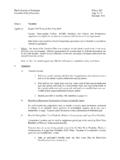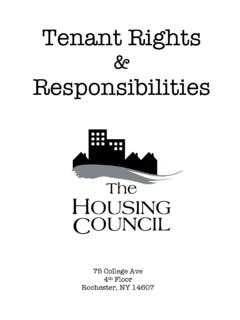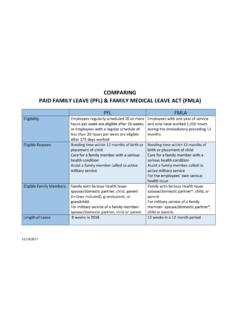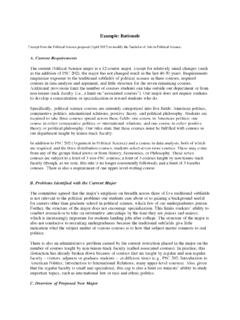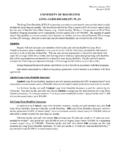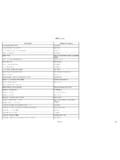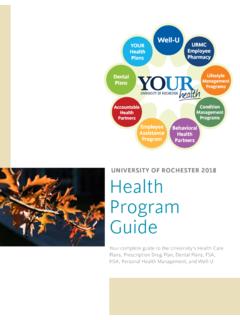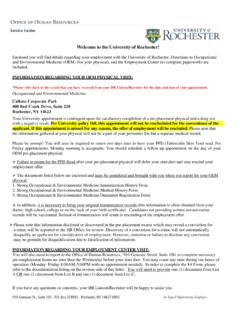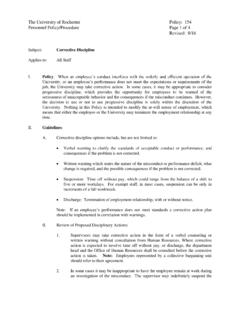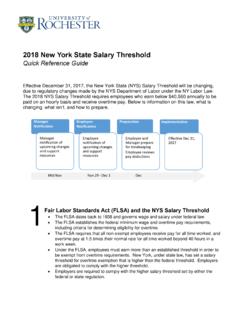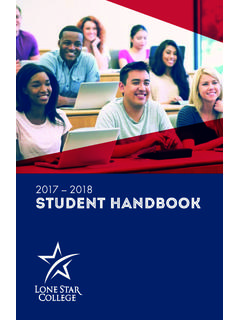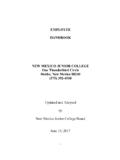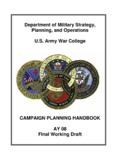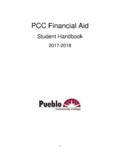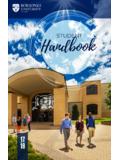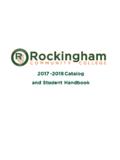Transcription of Faculty Handbook - rochester.edu
1 Faculty Handbook UNIVERSITY OF rochester . UPDATED: MAY 2017. Table of Contents Table of Contents ..1. I. Introduction ..4. II. Organization ..6. A. Trustees ..6. 1. The Committees of the Board ..6. B. Central 1. President ..6. 2. Provost ..7. 3. Vice Presidents and Other C. Schools of the University ..7. D. Graduate Studies ..7. E. Faculty Senate ..7. F. Faculty Governance ..8. G. Intercessors ..9. III. University Policies ..10. A. Affirmative Action, Equal Employment Opportunity, and Discrimination and Harassment ..10. B. Conflicting Employment Relationships (Nepotism) ..11. C. Intimate Relationships ..11. D. Copyright and Fair Use Policy.
2 12. E. Disability Accommodation ..12. F. Dissent and Public Order ..12. 1. Standards of Conduct ..12. 2. Procedures for Addressing Violations ..13. G. Distinguished Visitors .. 14. H. Drugs ..14. I. Flag Procedures .. 14. J. Political Activity .. 14. K. Religious Observance ..15. L. Safety ..15. M. Security ..15. N. Smoking ..16. O. Solicitation of Funds ..16. P. University Q. Information Technology Resources and the University Web ..17. R. Signature Authority .. 17. S. Faculty Role in Senior Academic Administrator Searches and Reviews for Reappointment .. 17. IV. Faculty Policies ..19. A. Faculty Duties, Rank, and 1. Policy on Lengths of Appointments at Various Faculty Ranks.
3 20. 2. Process for Appointment and Reappointment ..22. 3. Process for Promotion ..23. 4. Appointment Papers ..28. 5. Appointment of Foreign Nationals ..29. 6. Periods of Appointment ..29. 1. 7. Simultaneous Appointments at Other Institutions ..29. 8. Resignation ..30. B. Special Faculty Titles ..30. 1. Visiting Faculty .. 30. 2. Part-Time Faculty .. 30. 3. Adjunct Faculty .. 31. 4. Clinical and Other Special Faculty .. 30. 5. Emeritus Status .. 31. 6. Other Nontenure Faculty Titles .. 32. C. Faculty Grievance Procedures ..32. 1. Tenure Grievances .. 33. 2. General Grievance Procedure .. 34. D. Procedures for Revocation of Tenure ..35. E. Leaves.
4 37. 1. Principles Applicable to All Leaves .. 37. 2. Leaves of One Week or Less .. 38. 3. Leaves of More Than One Week but Less Than One Month .. 38. 4. Leaves of More Than One Month .. 38. 5. Junior Faculty Leaves .. 40. 6. Personal Leaves .. 40. 7. Part-Time Leaves .. 40. 8. Bridging Fellowships .. 41. F. Policies on External Activities Relating to Research and Scholarship (Consulting and Conflict of Interest) and Other Conflicts of Interest .. 41. G. Intellectual Property and Technology Transfer ..45. H. Policy on Misconduct in Scholarship and Research ..45. 1. Initial Reporting and Inquiry .. 46. 2. Investigation .. 46. 3. Further Action.
5 47. I. Confidentiality of Faculty Records ..47. J. Research ..48. K. Retirement .. 49. L. Early Retirement and the Faculty Senior Associates Program ..49. 1. Eligibility .. 50. 2. Initial 50. 3. Annual Changes in Payment .. 50. 4. Social Security Benefit .. 50. 5. Payment Process and Taxability of Payment .. 50. 6. Termination .. 50. 7. Benefits .. 51. 8. Changes to Program .. 51. V. Student-Related Policies ..52. A. Academic Honesty .. 52. B. Confidentiality of Student Files .. 52. VI. Faculty Benefits .. 54. A. Healthcare 54. 2. B. Dental Assistance Plan .. 54. C. Short-Term Disability .. 54. D. Long-Term Disability for Full-Time Faculty .
6 54. E. Worker's Compensation .. 54. F. Drugs and Alcohol 55. G. Smoking .. 55. H. Employee Assistance Program .. 55. I. Family Care .. 55. J. Family Medical Leave for Faculty .. 55. K. Faculty Parental Leave Policy .. 55. L. Unpaid Personal Leaves of Absence 57. M. Group Life Insurance .. 58. N. Travel-Accident Insurance Plan .. 58. O. Tuition Benefits for Full-Time Faculty .. 58. P. Retirement Program/Tax-Deferred Investment Options .. 58. Q. Unemployment Insurance 59. R. Flexible Spending Accounts 59. S. Vacation .. 59. 3. I. Introduction This Handbook sets forth policies, procedures, and information that, by common consent, are those governing the University Faculty as a whole.
7 Either the Office of the Provost, or the Senate Executive Committee, may initiate revisions to this Handbook . Following a proposal to revise the Handbook , the Provost and the Senate Executive Committee must agree on the proper Senate committee to consider the proposal. After consideration of the proposal, that committee reports its findings to the Provost and Senate Executive Committee. The proposed Handbook changes are forwarded as well to the academic units of the University. The authorized governance bodies in each of the academic units will report to the Senate Executive Committee the results of any deliberations on the proposed changes.
8 The Senate Executive Committee reports to the Senate and the Provost about the impact of the proposed changes. After completion of these steps, the Faculty Senate will vote on the proposed changes and communicate the result and the accompanying report to the Board of Trustees. The Board of Trustees will consider the Senate's report and any recommendation from the Provost, for their final action. The Senate Executive Committee in consultation with the full Senate may approve changes that are trivial, non-substantive, or required by changes in applicable law, without use of the process described above. Board of Trustees approval is unnecessary for changes to the Handbook that are trivial, non-substantive, or required by applicable law.
9 As text is amended, an email announcement will be sent to all Faculty via the Faculty listserv. Amended sections will be dated, and a cumulative summary of all changes will be included at the end of the Handbook . This Handbook is not intended to replace or supersede Faculty rules and regulations of the several schools and colleges or the applicable personnel policies set forth in the University's Human Resources Policies which can be found at In the event of a conflict or inconsistency, the University's personnel policies and procedures will govern. In some circumstances (signaled by a phrase such as "schools may adopt"), the policies set forth in this Handbook enable or allow colleges and schools to adopt certain policies at their discretion.
10 In such cases, the policies and procedures of the school or college determine how the policies will be implemented. The University's Policy on Policy-Making requires that certain policies referenced in this Manual which impact Faculty in a manner distinct from or more significantly than others will be discussed before adoption with the Faculty Senate Executive Committee and, if the Executive Committee deems it appropriate, with the entire Faculty Senate. See: Although this Handbook delineates many of the rules that govern the Faculty of the University, underlying these rules are the fundamental convictions that shape the life of the modern university above all, an abiding commitment to the free inquiry essential to the creation and dissemination of knowledge.
